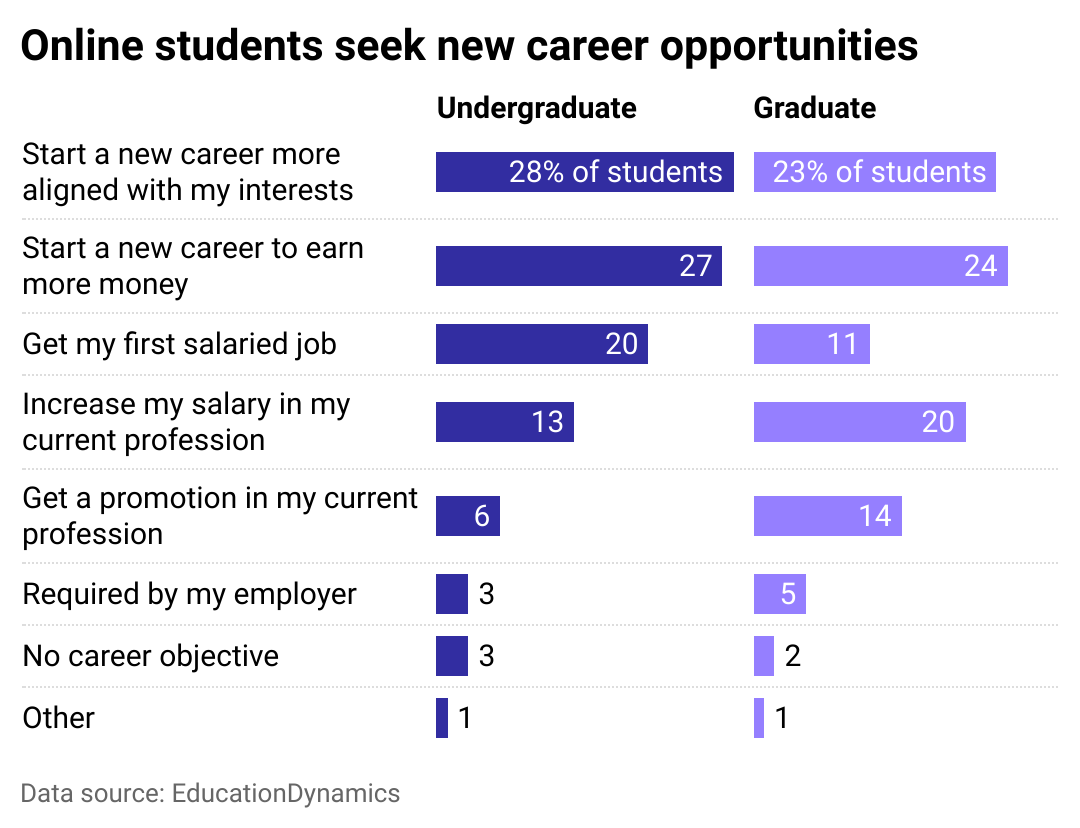Ground Picture // Shutterstock Going away to college isn’t for everyone–an increasing number of students are opting to earn their degrees online. When colleges had to shift to online learning during the COVID-19 pandemic, many students found they benefited more from online classes versus a traditional classroom setting. By 2021, over half of undergraduate and graduate students were enrolled in at least some distance education courses, according to the National Center for Education Statistics. When students opt for online–or distance–education, they use technology to take their classes. Most online learning programs are delivered via the internet using either audio conferencing or videoconferencing tools. Classes can be synchronous, where the professor and entire class are online, or asynchronous, where students watch pre-recorded lectures and do classwork on their own schedules. Some schools offer hybrid learning, a mix of in-person and online classes. Before the pandemic, online learning programs were typically for people going back to school to augment or change their career or pursuing a graduate degree to enhance their career while they work. That attitude is shifting as students juggle learning with jobs, family responsibilities, and commutes. In California, 4 in 5 community college classes were in person before the pandemic. By 2021, just 1 in 4 were in person, while 65% were online, according to the California Community Colleges Chancellor’s Office. Younger students are also opting for online classes. EducationDynamics found in 2023 that the largest share of students pursuing undergraduate or graduate degrees online is 35 or younger. That said, 35% of students pursuing online undergraduate degrees are between 19 and 23, and 42% of online graduate students are between 30 and 35. Will online learning become the preferred way of earning a college degree? EDsmart used data from the NCES and research from EducationDynamics to explore why participation in online classes is on the rise among undergraduate and graduate students. Remote learning was already on the rise before COVID-19
Online college enrollment is on the rise: What brings students to virtual campuses?









